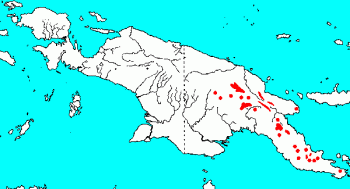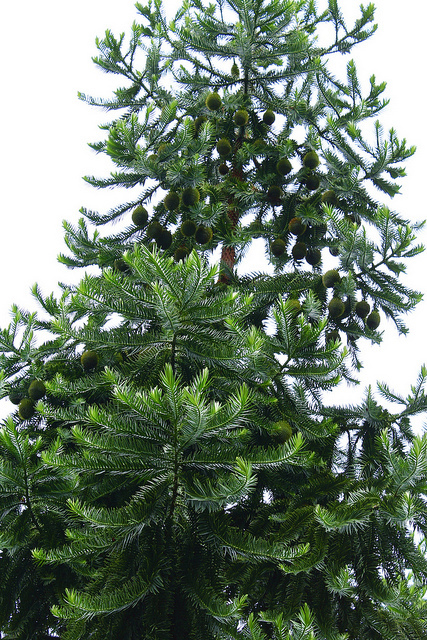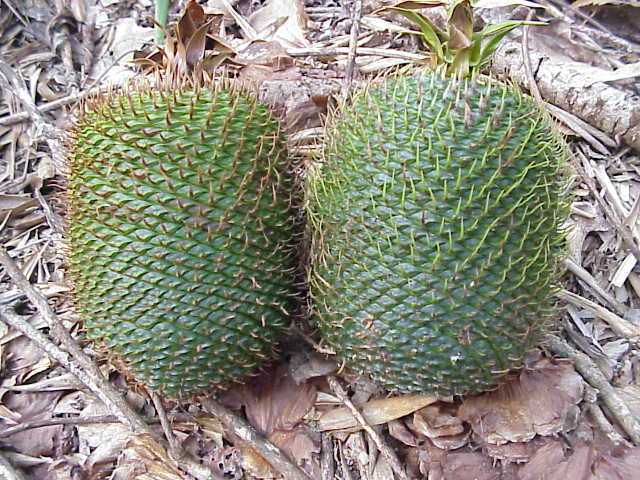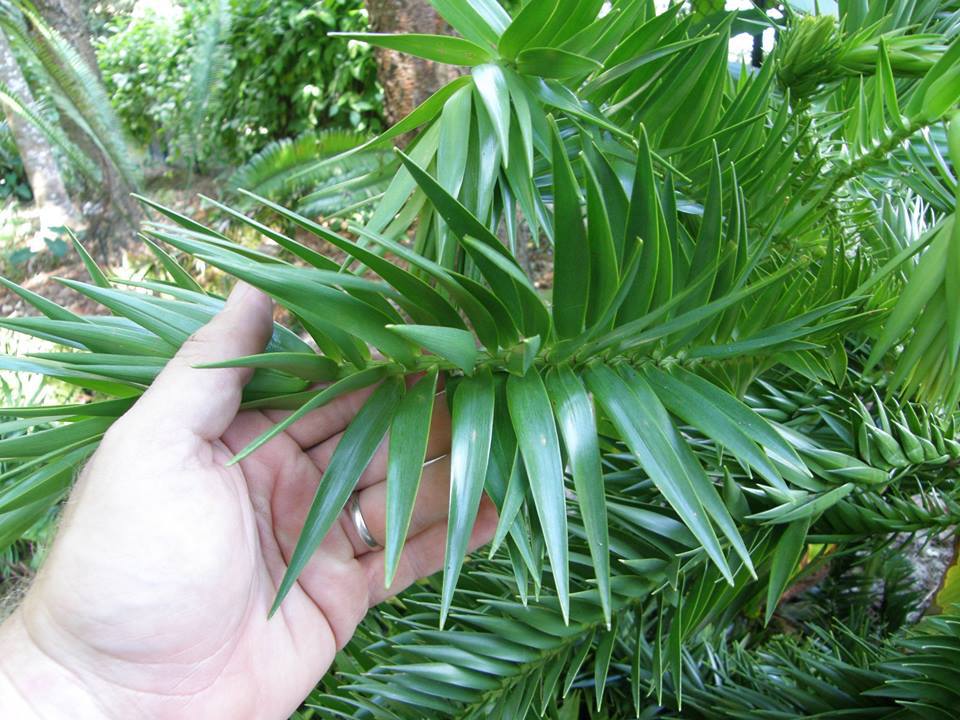Araucaria hunsteinii, first described by K. Schumann in 1899 is commonly known as Klinki pine.
Description. Klinki pine is a very large evergreen tree (the tallest in New Guinea, and the tallest species in its family), growing to 160 to 250 feet (50-80 m) tall, exceptionally to 290 feet (90 m), with a trunk up to 10 feet (3 m) diameter. The branches are horizontal, produced in whorls of five or six. The leaves are spirally arranged, scale-like or awl-like, 2.5 to 5 inches (6 - 12 cm) long and 0.7 inch (1.5-2 cm) broad at the base, with a sharp tip; leaves on young trees are shorter (under 3.5 inches/9 cm) and narrower (under 0.6 inch/1.5 cm). It is usually monoecious with male and female cones on the same tree; the pollen cones are long and slender, up to 8 inches (20 cm) long and 0.4 inch (1 cm) broad; the seed cones are oval, up to 10 inches (25 cm) long and 6 inches (14-16 cm) broad. The seed cones disintegrate at maturity to release the numerous 1.5 inch (3-4 cm) long nut-like seeds.

Distribution. This species is native to northeastern New Guinea - Bulolo Valley, at elevations between 1,900 and 6,000 feet (600 - 2,000 m).


